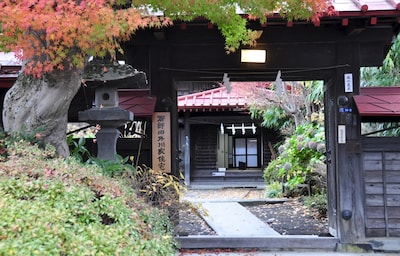
10 Best UNESCO World Heritage Sites In Japan
Ranging from historical to natural to cultural, these 10 incredible UNESCO World Heritage Sites in Japan will make you want to travel there now!


Ranging from historical to natural to cultural, these 10 incredible UNESCO World Heritage Sites in Japan will make you want to travel there now!

Marked by swanky design in the midst of Hakone's mountains, the Okada Museum of Art features an impressive collection of East Asian ceramics and varied Japanese art.

Filled with fireflies in May, the Genbe River flows 1.5 kilometers through the heart of Mishima, from its source in a volcanic park to a reservoir with a lovely view of Mount Fuji. It's a lovely spot for a stroll filled with reminiscences of childhood.

Walk through a former imperial villa on the Numazu coast, featuring turn-of-the century furniture and woodwork.

Fujisan Hongu Sengen Taisha is the head of all Fuji-worshipping shrines, and the traditional 'front door' to the ascent up Mount Fuji.

Said to date all the way back to the year 110, Kitaguchi Hongu Fuji Sengen Shrine marks the entrance to the Yoshidaguchi climbing trail on the north side of Mount Fuji.

With a history of some 400 years, Zuzuya is one of only two pilgrim's lodgings in Kamiyoshida still offering rooms to Fuji worshippers preparing to climb their sacred mountain. It's also a great spot to make an ink talisman from an Edo Period wood block!

'Oshi' houses traditionally provided lodging for worshippers preparing to ascend Mount Fuji. Reaching their peak in the 19th century, a number of these houses can still be seen in Kamiyoshida in Yamanashi Prefecture.
